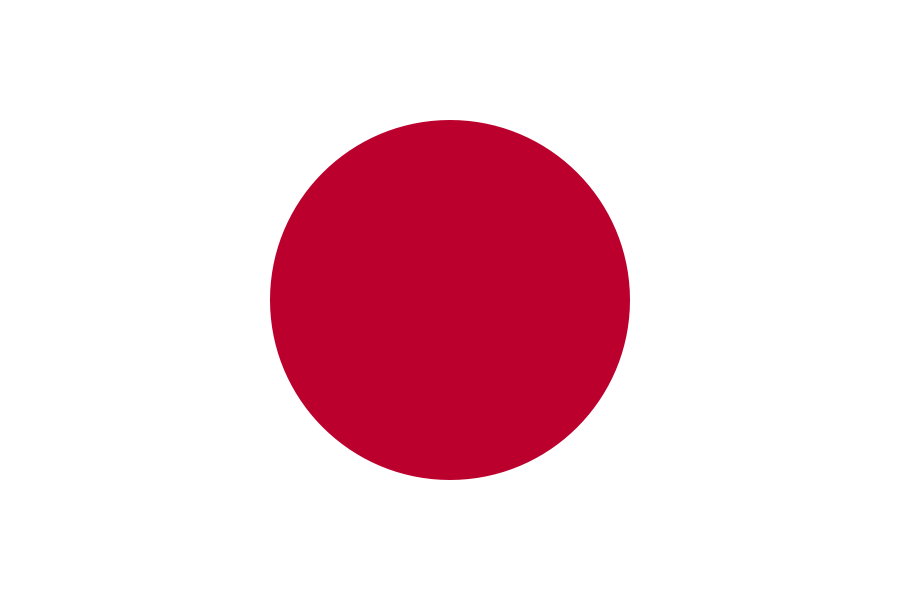The Japanese flag, officially known as the Nisshōki (日章旗), is an iconic and deeply meaningful national symbol representing the Land of the Rising Sun. Its design is elegant and straightforward, yet it carries a wealth of historical and cultural significance, making it a powerful emblem of Japan's identity.
Description: The flag is rectangular, with a bold and vibrant red color dominating the entire field. Often referred to as "Japan Red" or "Japanese Vermilion," this shade of red holds cultural and traditional importance in Japanese aesthetics. The flag's proportions are traditionally 7:10 (height to width), although historical usage has seen other ratios as well, particularly on ceremonial flags.
Design: At the heart of the flag lies a prominent circular disc known as the Hinomaru (日の丸), which translates to "sun's circle" or "circle of the sun." The Hinomaru is meticulously centered both horizontally and vertically within the red field, ensuring an equal margin of red on all four sides. This precise alignment creates a visually pleasing sense of balance and harmony in the flag's design.
The circular shape of the Hinomaru is a representation of the sun, an entity of profound cultural, historical, and religious significance in Japan. The color of the disc is pure white, providing a stark contrast against the bold red background. This whiteness signifies purity, integrity, and enlightenment, aligning with the positive attributes associated with the sun.
Historical Significance: The origins of the Japanese flag date back to ancient times, with the depiction of a red sun on a white background found in historical artifacts dating as far back as the 7th century. Throughout Japan's long history, various iterations of the flag emerged, each reflecting the country's evolving identity and political changes.
One pivotal event in the flag's history occurred during the Meiji Restoration in the late 19th century. In 1868, the Meiji Period ushered in a transformative era of modernization and cultural revival, culminating in the establishment of the Meiji government. On February 27, 1870, the government officially adopted the flag as the national symbol of Japan. The flag became a potent representation of unity, symbolizing the authority of the Emperor and the new unified nation-state.
Over the centuries, the flag has consistently served as a source of national pride and identity for the Japanese people. However, during World War II, its association with Japan's imperial militarism and aggressive expansionism created negative connotations in the eyes of some nations. Nevertheless, after Japan's surrender in 1945, the flag was retained without any modifications as a symbol of hope, reconciliation, and a renewed commitment to peace.
Modern Usage: In contemporary Japan, the flag remains an integral part of daily life and national identity. It is prominently displayed on government buildings, educational institutions, private residences, and during national holidays, significant ceremonies, sporting events, and cultural festivals.
The Japanese flag continues to serve as a powerful symbol of Japan's rich history, resilient culture, and unyielding spirit. It stands as a reminder of the nation's deep-rooted connection to its ancient heritage and its unwavering dedication to peace and prosperity. The Japanese people hold their flag in high regard, treating it with utmost respect and embodying the virtues of honor, unity, and national pride it represents.
Last Updated on: November 13, 2025
